The concept of ‘biophilia’, from the Greek meaning ‘love of life and the living world’, was first made popular by the American biologist, E.O. Wilson in 1984. He believed that, since we evolved in nature, we have a biological need to connect with it. We love nature because we learned to love the things that helped us to survive. We feel comfortable in nature because that is where we have lived for most of our time on earth. In other words, we are genetically determined to love the natural world: it is in our DNA. Strong evidence for our ‘nature-primed neurons’ comes from the related concept of ‘biophobia’, which asserts that we have an innate fear or disgust of natural phenomena that would have been harmful to our survival, for example we detect a snake pattern more quickly than any other, and a gagging reflex is activated at the smell of rotting meat. Further supporting evidence for an evolutionary basis to our affinity with nature comes from studies showing our marked preference for ‘savannah’ style environments, open, grassy landscapes with small scattered trees (Balling & Falk, 1982; 2010), similar to those of East Africa where the human species evolved. Appleton proposed a ‘prospect-refuge’ theory (1996) to explain our preferences for these landscapes, suggesting we make aesthetic judgements according to the extent to which they represent the genetically important features of ‘prospect’, an open, unimpeded view, and ‘refuge’, an opportunity to hide from any hazard. Our attraction to the sound of running water has been similarly attributed to the evolutionary advantage of a nearby clean water source (Choker & Mene, 1992; Ulrich, 1993).
Since E.O. Wilson’s time when there was little scientific evidence humans’ biophilic connection, science has explained how and why.
Very simply, everything falls into place, effortlessly, through our senses. In other words, it is by focusing on our body and our senses and allowing them to interact with Nature in specific ways, that our brain enters into alpha waves mode which not only improves our mental and physical health, but also the capabilities of our brain (see more here).
Today, many scientists from a wide variety of disciplines, including biologists, medical doctors, psychologists and neuroscientists, are beginning to recognize that this affinity for the natural world may be fundamental to our health, and growing evidence is suggesting that contact with nature may be as vital to our well-being as regular exercise and a healthy diet.
Recent findings have shown that our five senses are hardwired in our DNA for connection with Nature.
As Dr Qing Li, Associate Professor at the Nippon Medical School in Tokyo and one of the world’s leading experts on the health benefits of natural environments puts it:
‘We are “hard-wired” to affiliate with the natural world, and just as our health improves when we are in it, so our health suffers when we are disconnected from it’ (2018).
With urbanization, we have witnessed this disconnection of humans from Nature. It has become increasingly clear: this dis-connection leads to dis-ease and such dis-function in the very workplaces we keep aiming to optimize.
By 2050, 70% of humanity will be living in urban areas, thereby accelerating the feeling of dis-connection and dis-ease that Humans are suffering from.
But what are our senses and how are they the key to our health and our human potential ?
As it turns out our five core senses as first categorized by Aristotle are grouped together as “exteroceptive”, because it is through them that we interface with the external world.
- Sense of Sight: color (hue satutation, shade), light intensity, distance, motion, texture, speed, range of focus (narrow/wide), sharpness of focus.
- Senses of Hearing: volume, pitch, quality, direction, rhythm.
- Sense of Touch (tactile system): temperature, texture, pressure, pain/pleasure.
- Sense of Smell (olfaction): pleasant/unpleasant, intriguing, metallic, sharp, musty, musky, etc…
- Sense of Taste: gustatory perception, or gustation) : sweetness, sourness, saltiness, bitterness, umami, kokumi.
In humans, these five exteroceptive senses are positively adapted to interact and reciprocate with stimuli from Nature, because this is where we have lived most of our time on earth.
Research shows that positive adaptation does not seem to have happened for our senses to reciprocate with urban stimuli.
As per Biophilia, when our senses find the stimuli from Nature that they are positively adapted for, our brain goes into Alpha waves (see below), and a whole chain of mental and physiological benefits follow. It is like coming home for us.
And as Hans Christian Andersen’s fairy tale “The Nightingale” illustrates, imitations of Nature’s beneficial stimuli just does not have the same benefits for humans.
Although research is still in its early days, science has discovered some of Nature’s specific stimuli (or “active ingredients”) that create health benefits when they interact with human senses.
- Sight <–> Fractals
- Hearing <–> Birds, Water, Wind
- Touch <–> Tree bark, plant foliage, negative ions from earth
- Smell <–> Phytoncides
- Taste <–> Soil bacteria
(What are the active ingredients section).
Although most of the research has so far focused on these five “exteroceptive” senses, it is known that humans have many others that have been neglected with increasing urbanization such as:
- Proprioception
- Interoception
- Mirror
- Body Radar
- Feeling / Heart Sense
- Subtle Energy Sense
- Imaginal Sense
A lot could be said about each one, and during Natural Leadership’s guided Multisensorial Nature immersions, these senses are rediscovered and explored to bring further benefits.
Finally, it is important to note that senses may interact with one another (a phenomenon call synesthesia), and that some senses may be the gateway to others.
It has been discovered that Intuition is a sense that we access readily when our brain is in alpha wave mode (around 7.5 Hz).
But today, many of us don’t know what it means to have strong sensory awareness or inner connection, or how we feel in our own body about certain situations. In that state, we cannot access intuition.
During guided Multisensorial Nature immersions, we access our sense of Intuition simply by focusing on exercises for our five core senses in Nature.
This happens because these multisensorial exercises enable our brain to enter alpha wave mode.
Thus, our five core senses are the gateway to the sense of intuition, as a starting point…
But what do we call “intuition” exactly ?
Intuition is an intuitive perception that is commonly acknowledged to play an important role in business decisions and entrepreneurship, learning, creativity, medical diagnosis, healing, spiritual growth, and overall well-being.
If we dig deeper, intuition corresponds to 3 different types of process:
- Implicit knowledge or learning. Knowledge we acquired in the past and either forgot it or did not realize we learned. The brain matched the patterns of new problems or challenges with stored templates in memory based on prior experience.
- Energetic sensitivity, which refers to the ability of our nervous system to detect and respond to environmental signals such as electromagnetic fields. For example, it is well established that in both humans and animals, nervous system activity is affected by geomagnetic activity. Some people appear to have the capacity to feel or sense that an earthquake is about to occur before it happens. It has recently been shown that changes in the earth’s magnetic field can be detected about an hour or even longer before a large earthquake occurs. Another example of energetic sensitivity is the sense that someone is staring at us. Several scientific studies have verified this type of sensitivity.
- Nonlocal intuition, which refers to the knowledge or sense of something that cannot be explained by past or forgotten knowledge or environmental signals. Examples of nonlocal intuition are when a mother senses something happening to her child, who is many miles away, or the repeated, successful sensing experienced by entrepreneurs about factors related to making effective business decisions.
In guided multisensorial Nature immersions, we have facilitated access to the first two types of intuition processes. The third one comes with regular practice.


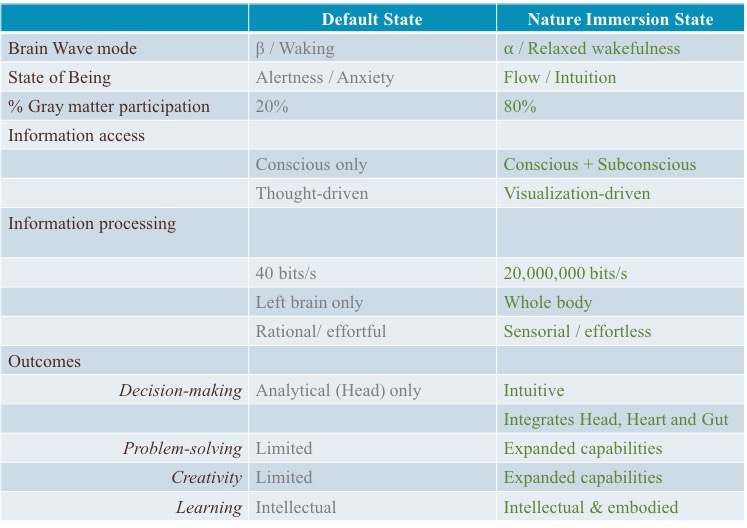
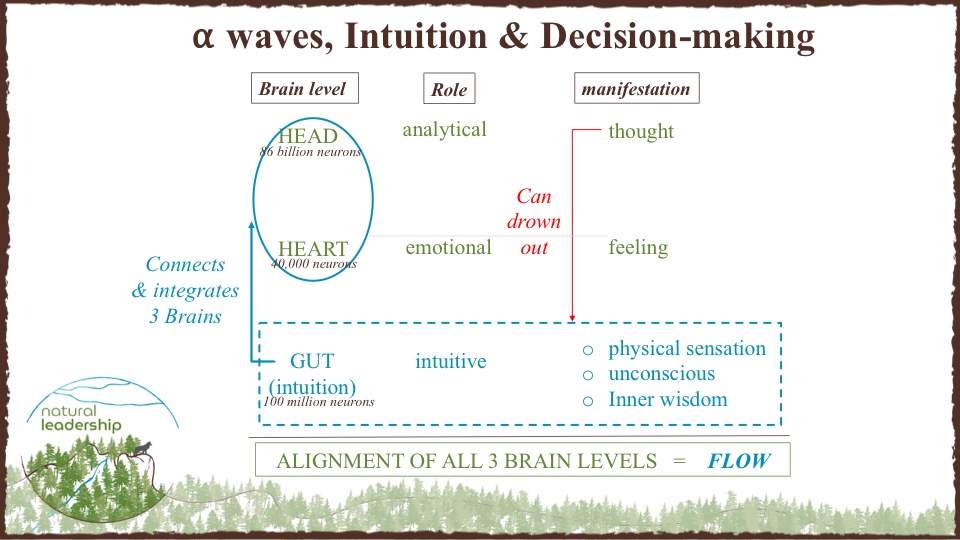
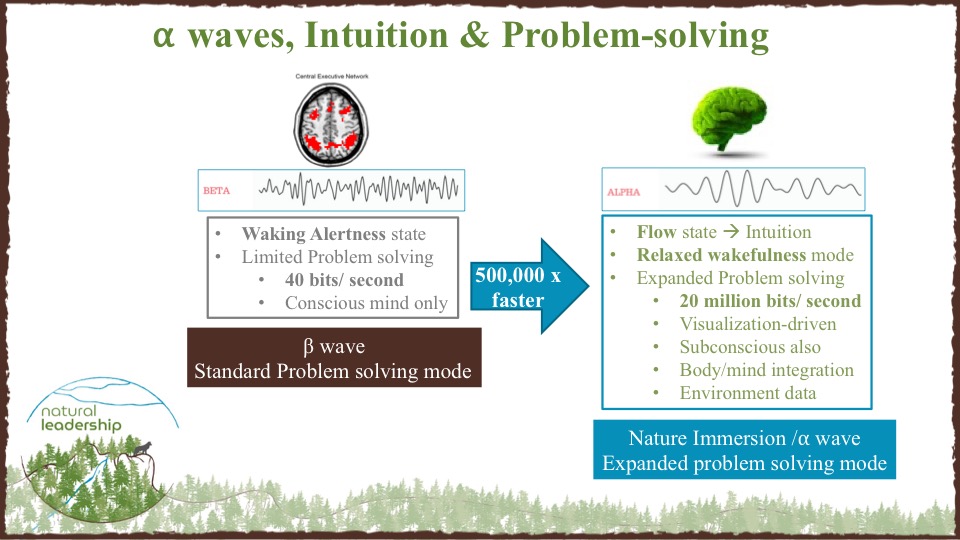
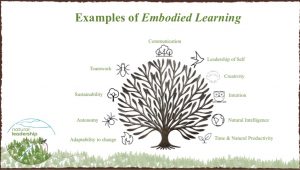
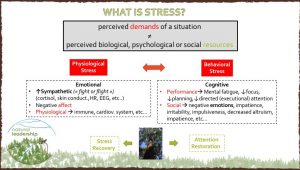
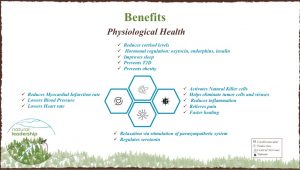
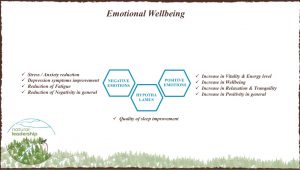
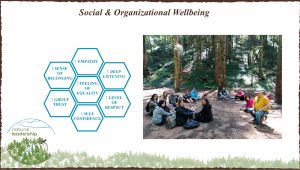
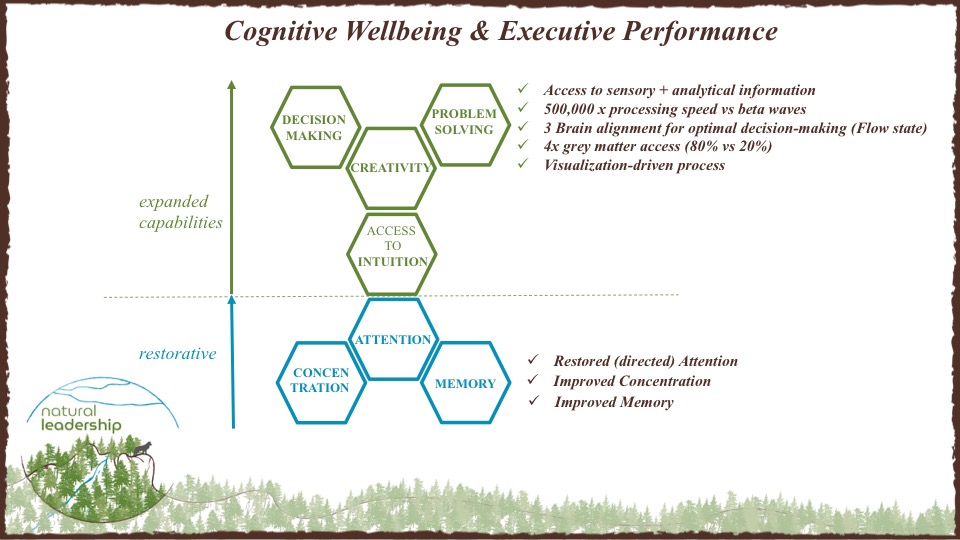
 These are naturally occurring chemical compounds secreted by plants and trees to protect themselves from ‘a threat’ such as bacteria, insects and funghi. When a plant detects a threat of this kind, its immune system increases the production of phytoncides to control the growth of the infection. Our bodies appear to respond positively to some of these phytoncides, which, unsurprisingly, given we evolved amongst trees breathing in these substances, seem to work in concert with our own immune systems.
These are naturally occurring chemical compounds secreted by plants and trees to protect themselves from ‘a threat’ such as bacteria, insects and funghi. When a plant detects a threat of this kind, its immune system increases the production of phytoncides to control the growth of the infection. Our bodies appear to respond positively to some of these phytoncides, which, unsurprisingly, given we evolved amongst trees breathing in these substances, seem to work in concert with our own immune systems.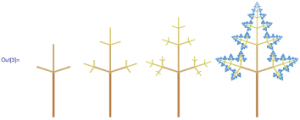 Richard Taylor, a nanoparticle physicist, conducted experiments to measure people’s physiological response to viewing images with fractal geometries. He measured skin conductance and found people recovered from stress 60% better when viewing computer images with a mathematical fractal dimension (D) of between 1.3 and 1.5. Several experiments have confirmed that people generally prefer images with this low to mid-range D, most commonly found in natural phenomena.
Richard Taylor, a nanoparticle physicist, conducted experiments to measure people’s physiological response to viewing images with fractal geometries. He measured skin conductance and found people recovered from stress 60% better when viewing computer images with a mathematical fractal dimension (D) of between 1.3 and 1.5. Several experiments have confirmed that people generally prefer images with this low to mid-range D, most commonly found in natural phenomena. 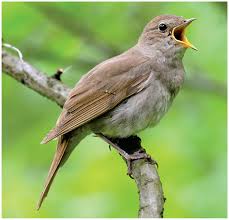 Urban noise is considered one of the greatest pollutants of modern city living, with the World Health Organisation attributing thousands of deaths every year in Europe to heart attack and stroke caused by high levels of background noise. Numerous studies have demonstrated the links between noise pollutants and stress: in a German study of 2000 men, environmental noise over 50 decibels was associated with a 20% increase in hypertension; in a sample of nearly a million people living near Bonn airport, women exposed to noise over a 46 decibels were twice as likely to be on medication for hypertension as those exposed to noise under 46 decibels; in a huge study amongst several thousand school children in UK, Spain and the Netherlands living near large airports, there were significant impacts of noise levels in reading comprehension, memory and hyperactivity (Clark et al., 2005); and a study before and after the opening of the international airport in Munich showed nearly a doubling of stress hormones epinephrine and norepinephrine in children near the airport after flights began, and a significant increase in blood pressure compared with the children living further from the airport.
Urban noise is considered one of the greatest pollutants of modern city living, with the World Health Organisation attributing thousands of deaths every year in Europe to heart attack and stroke caused by high levels of background noise. Numerous studies have demonstrated the links between noise pollutants and stress: in a German study of 2000 men, environmental noise over 50 decibels was associated with a 20% increase in hypertension; in a sample of nearly a million people living near Bonn airport, women exposed to noise over a 46 decibels were twice as likely to be on medication for hypertension as those exposed to noise under 46 decibels; in a huge study amongst several thousand school children in UK, Spain and the Netherlands living near large airports, there were significant impacts of noise levels in reading comprehension, memory and hyperactivity (Clark et al., 2005); and a study before and after the opening of the international airport in Munich showed nearly a doubling of stress hormones epinephrine and norepinephrine in children near the airport after flights began, and a significant increase in blood pressure compared with the children living further from the airport.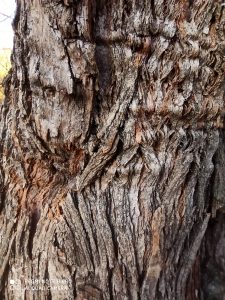 Koga and Iwasaki study revealed statistically significant correlations between touching natural substances, such as tree-bark, and incidents of decreased blood pressure. Moreover, these findings are associated with an increase in participants’ subjective feelings of calmness.
Koga and Iwasaki study revealed statistically significant correlations between touching natural substances, such as tree-bark, and incidents of decreased blood pressure. Moreover, these findings are associated with an increase in participants’ subjective feelings of calmness.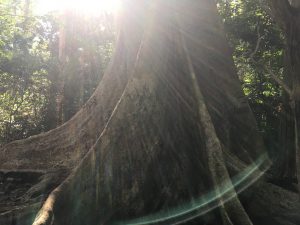 been recognised by doctors for centuries, with Hippocrates routinely prescribing ‘sunbaths’ as treatment for a variety of maladies as far back as 400 BC. The Roman philosopher Aulus Cornelius Celsus (25 BC to 50 AD) recommended that sufferers of melancholy live in spaces full of light; and in 1863 Florence Nightingale appealed to hospital designers to include wards that were brightly lit by natural sunlight. In 1984, ‘Seasonal Affective Disorder’ (SAD) was recognised as a condition which causes lethargy and sadness during the winter months when people spend more time indoors and are exposed to less natural light. With our modern technology-based lifestyles, there are now growing concerns that depressive symptoms linked to a deficit in sunlight exposure may no longer be limited to the winter months. Whilst for many people the health benefits of spending more time outside are obvious, researchers have been using scientific methods to investigate the positive impact on mental health and wellbeing of increased exposure to natural light (aan het Rot, Moskowitz & Young, 2006; Genuis, 2006; Walch et al., 2005).
been recognised by doctors for centuries, with Hippocrates routinely prescribing ‘sunbaths’ as treatment for a variety of maladies as far back as 400 BC. The Roman philosopher Aulus Cornelius Celsus (25 BC to 50 AD) recommended that sufferers of melancholy live in spaces full of light; and in 1863 Florence Nightingale appealed to hospital designers to include wards that were brightly lit by natural sunlight. In 1984, ‘Seasonal Affective Disorder’ (SAD) was recognised as a condition which causes lethargy and sadness during the winter months when people spend more time indoors and are exposed to less natural light. With our modern technology-based lifestyles, there are now growing concerns that depressive symptoms linked to a deficit in sunlight exposure may no longer be limited to the winter months. Whilst for many people the health benefits of spending more time outside are obvious, researchers have been using scientific methods to investigate the positive impact on mental health and wellbeing of increased exposure to natural light (aan het Rot, Moskowitz & Young, 2006; Genuis, 2006; Walch et al., 2005).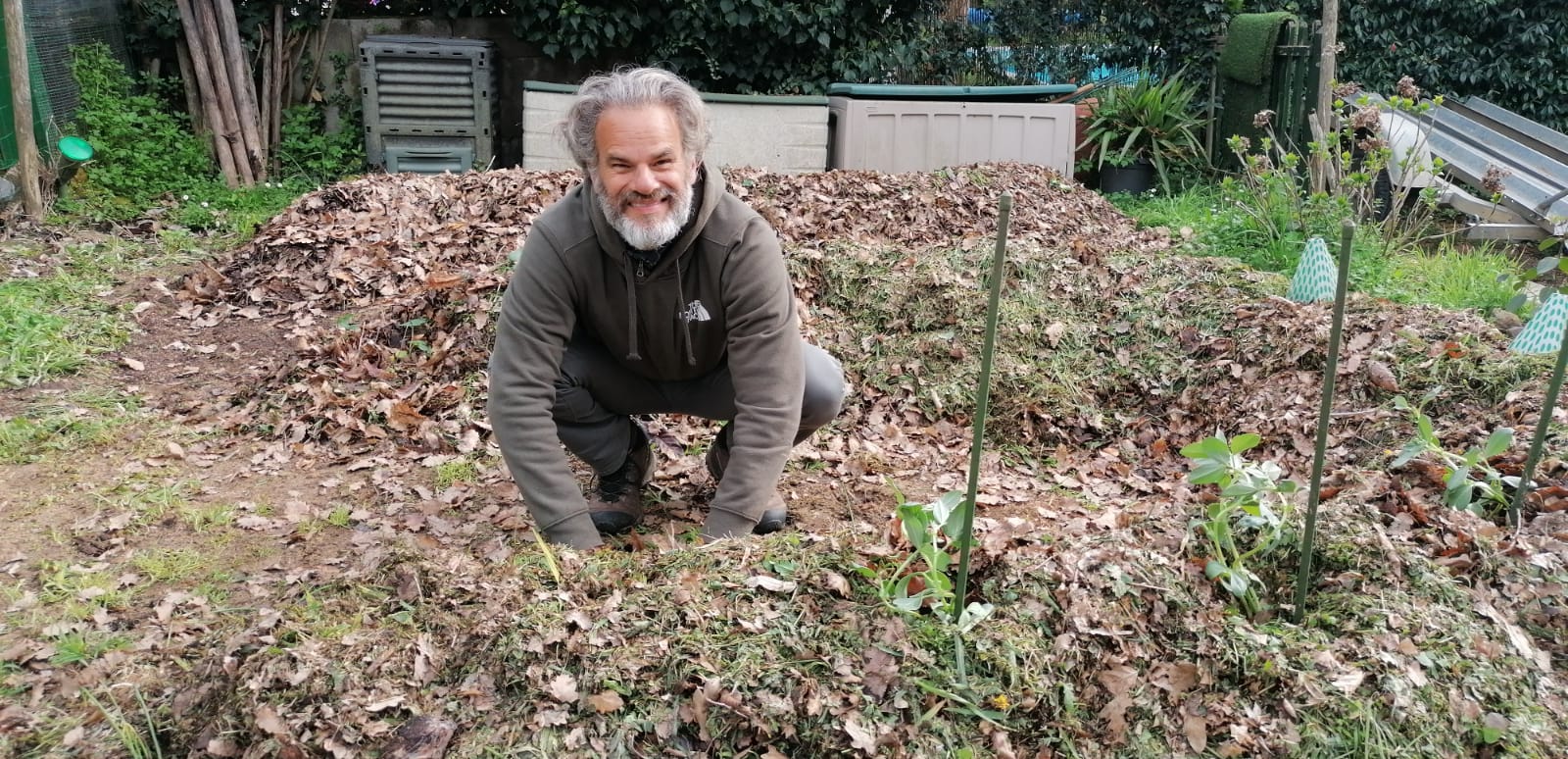
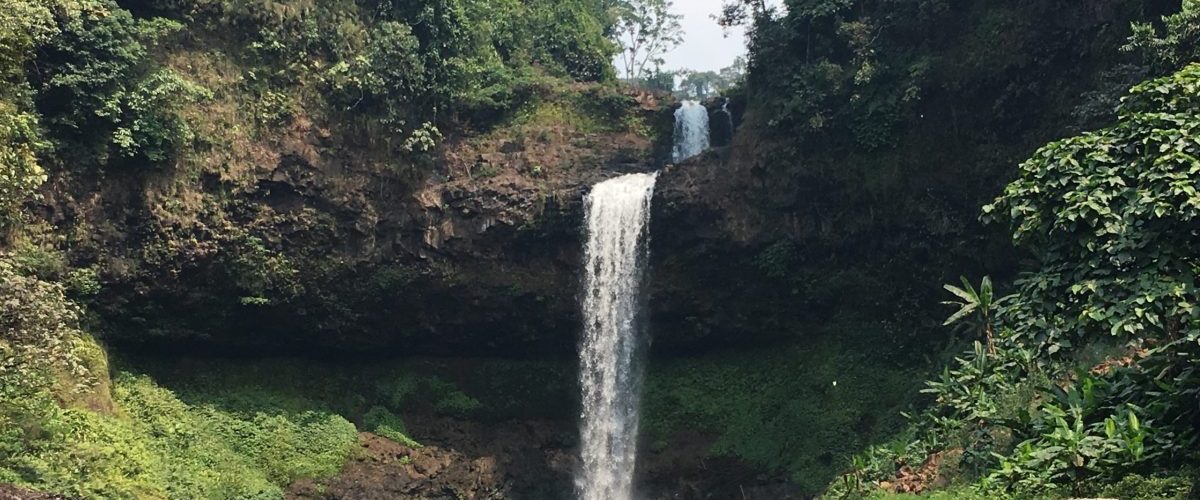
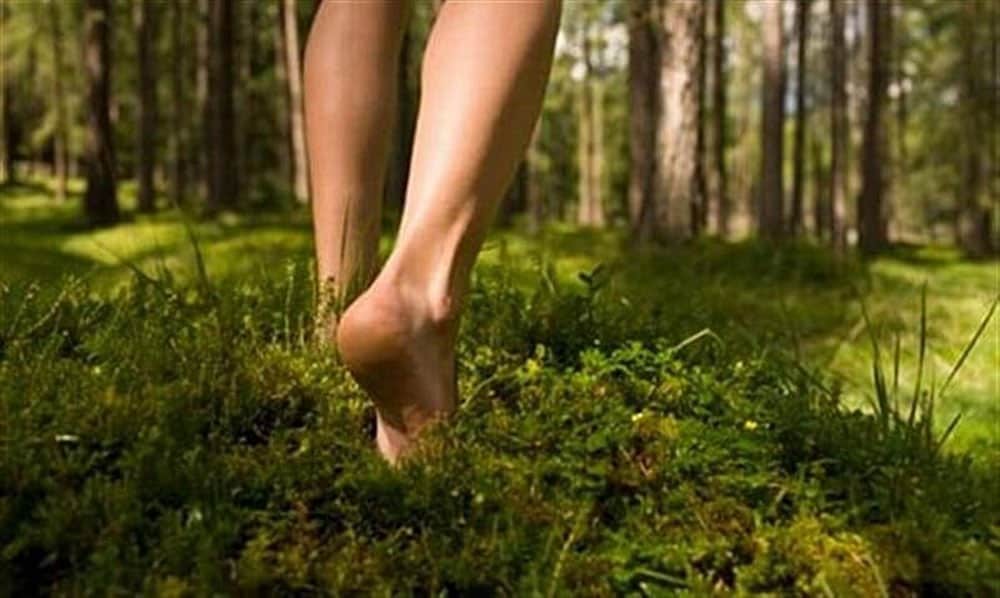
 Associated with myocardial inflammation and respiratory conditions (Villarreal-Calderon et al., 2012): reduced air pollution has an inevitable positive health impact.
Associated with myocardial inflammation and respiratory conditions (Villarreal-Calderon et al., 2012): reduced air pollution has an inevitable positive health impact.